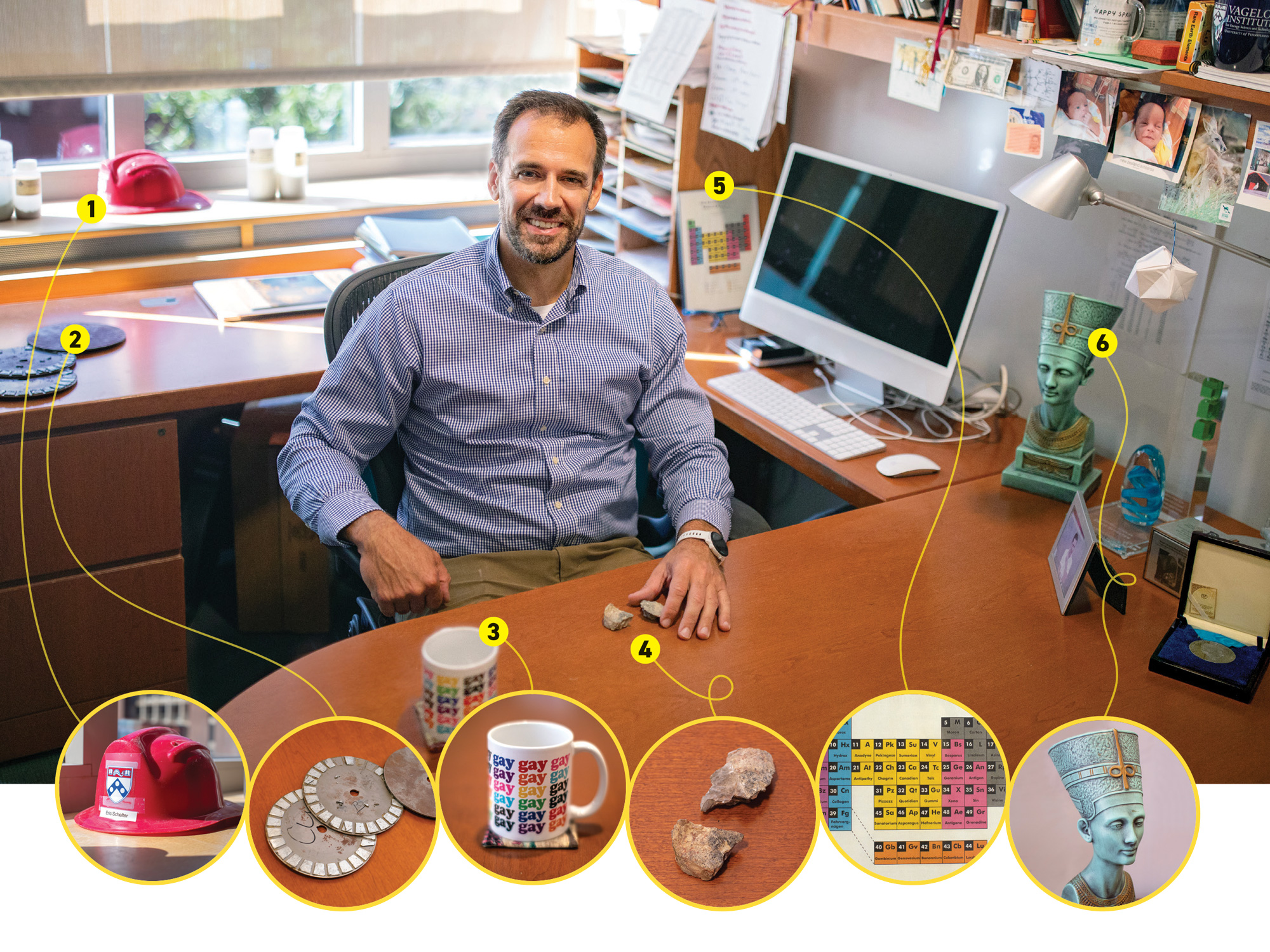
I’ve occupied this office in the Vagelos building of the chemistry complex for almost 15 years, having taken it over from legendary organometallic chemist Professor Brad Wayland. The office has exceptional views of the Fisher Fine Arts Library. I’ve enjoyed contemplating the gargoyles and watching red-tailed hawks perch atop the flagpole on the library’s roof.
Next year, my group will move to the new Vagelos Laboratory for Energy Science and Technology at Walnut and 32nd Streets. We are excited for the move and for the new opportunities for collaboration and discovery that will bring, but it does feel bittersweet—I started my career at Penn in this office and have had so many great conversations with students, postdocs, and colleagues here over the years. Here’s hoping the next resident of this office finds as much joy here as I did.
1) Firefighter’s Helmet
In 2015, a grad student had a small fire in a fume hood in the lab adjacent to my office and I responded by putting it out with an extinguisher. As a result, I got to meet Chief of Fire and Emergency Services Eugene Janda, one of the nicest guys on Penn’s campus. Dan Burke, the chemistry department’s building coordinator, had this hat made in recognition of my firefighting skills.
2) Wind Turbine Rotor Parts
These were sent to me by a wind turbine manufacturer. The small silvery pieces at the edges are permanent magnets made of energy-critical rare earth metals. We have crushed and dissolved the magnets to test our chemistry related to recycling of rare earths. I also use the rotors to demonstrate to students the strength of industrial-grade rare earth magnets.
3) Queer Coffee Mug
A Christmas present from my husband last year and a useful conversation starter for queer students.
4) Mineral Samples
During a conference trip in 2019, I collected these samples from the mine site where rare earth elements were first identified in Ytterby, Sweden. The samples contain the mineral gadolinite, named for the Finnish chemist Johan Gadolin. Though we now know how many rare earth elements the mineral includes, it’s still challenging to purify them efficiently and sustainably.
5) Framed “Periodic Table of Rejected Elements”
This image, by Michael Gerber and Jonathan Schwarz, appeared in the August 1999 issue of The Atlantic. It was a gift from legendary School of Engineering and Applied Science Dean Emeritus Eduardo Glandt. I’m a particular fan of “anodyne” (symbol A) and “crouton” (symbol Cr).
6) Bust of Nefertiti
A reproduction of the famous Nefertiti bust in the Staatliche Museen zu Berlin in Germany. This one I inherited from my grandmother, Dorothy Schelter. She was a brilliant and graceful educator and an inspiration to me. Of the original bust, Ludwig Borchardt, the Egyptologist, historian, and head of the 1912 Tell el-Amarna excavation, wrote: “Description is useless, must be seen.”


